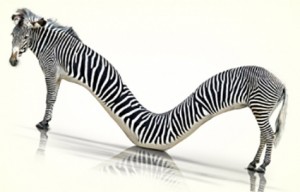Parametricism: A new global style for architecture and Urban design
Patrik Schumacher defines parametricism as a style for architecture. Style, a word he uses to define it as a movement as opposed to a fashion in this context. It consists of the use of digital tools (rhino, maya, scripting, processing…) and the emergence of a new perspective that governs them. The latter promotes accentuated differentiation of elements – responding to a post-fordist society – planned complexity and organicity. Parametricism attempts to understand relational quality that exists in nature taking into account social interactions, adaptability to new information and reciprocity of different systems and subsystems. It defines a new thought wave that understands space mainly through topological deformation.
Schumacher compares new architecture to Le Corbusier’s modernism. He criticises the idea of the straight line as an optimal trajectory for man, and recognizes the richness of unregulated fluid trajectories. The modernist idea of order doesn’t optimise itself to what nature’s complexity really is, it rather chases an ideal representation of reality that doesn’t leave space for any variations of state. The author relates once again the line of thought to the tools developed at that time and states that Le Corbusier’s idea of order is a result of the technology he knows, which is why it is too limited for the world we live in today. Instead he suggests understanding space by studying relational fields. He mentions Frei Otto’s experiments on form finding and optimised path networks: the experiments aim to create a network in which the change of one element automatically triggers a shift in the other elements. As a result, the path between different elements respond to the same variations that create all together new forms of ”occupying and connecting”. The system therefore implies constant changes and flexibility.
How is this relational logic implemented in architecture?
If we take the example of Zaha Hadid’s project, Kartal-Pendik urban project in Istambul, Schumacher explains that differentiation at an urban scale has been done in a coherent manner by ”bundling the incoming paths into larger roads enclosing larger sites”. The visual and formal relational approach is very clear, but the impacts on the social landscape are not mentioned at all. Joining incoming paths into megapaths creates a field without scale where the individual is in fact lost and social interaction is eliminated. In that urban proposition what is a pedestrian? Or does the concept even exist?
In addition, this proposal is meant to be the result of flexible architecture. But the design process ends when the project is built, the forms are crystallised, they do not allow new information to influence them. Why are landmarks with historical value erased if new landmarks are created as a formal expression to accentuate differentiation, especially knowing that this differentiation describes an ephemeral relational state, even further away from the complexities of reality? Parametricism as it is described in this text appears to be a style in the sense of fashion.
The intentions of understanding formal relations are expressed without sensitivity to social issues. The urban projects exposed are said to “facilitate navigation” when in fact they provoke the opposite due to an enormous change of scale that implies very exclusive types of relations and occupations. Who has access to those cities? Are we creating interfaces or barriers? In the social aspect, the application of parametricism seems to have many limits, or doesn’t seem to take it into account at all.
Schumacher describes a new optimised style that avoids “rigid geometric primitives like squares, triangles and circles” but is that the real issue? For example If we look at Fujimoto’s House N of squares within a square, the richness of interactions created through the multiple openings defines the complexity of interaction between people who experience closely this relational logic. Maybe House N is the example of a balanced approach between top-down and bottom up, in that the smallest unit is as essential as the largest one. So how viable are parametric tools? If the tools become the centre of Parametricism then this new style has the same limits as previous architectural styles, it is no longer sustainable. It could be that its viability is in the integration of these tools at different stages of the design process but also their possible use in the construction and throughout the life of the built environment. Then the question would be how the tools evolve with the process of architectural work, ensuring their role as a support system to creativity.

